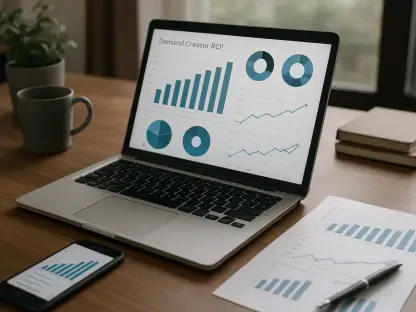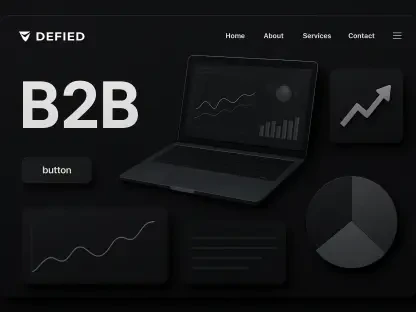Imagine a scenario where a small business website struggles to appear on the first page of Google search results, losing potential customers to competitors with seemingly effortless visibility. This challenge is more common than many realize, as Google prioritizes websites that demonstrate credibility and relevance over mere keyword stuffing. Building website authority stands as a critical solution to this problem, offering a pathway to higher rankings and greater trust from both search engines and users. This guide aims to equip readers with actionable strategies to enhance their website’s standing in Google’s eyes, ultimately driving more traffic and establishing a stronger online presence.
The importance of website authority cannot be overstated in today’s digital landscape. It serves as a cornerstone for achieving sustained success on Google, reflecting a site’s ability to provide reliable, valuable information within a specific niche. Beyond just improving search rankings, a high authority score contributes to building a reputable brand that resonates with audiences. This comprehensive guide will explore key methods such as securing quality backlinks, crafting impactful content, and utilizing powerful SEO tools to measure progress, ensuring a clear roadmap for elevating a website’s credibility.
Why Website Authority Is Your Key to Google Rankings
Website authority plays an indispensable role in determining how Google ranks content in its search engine. Unlike earlier SEO practices that relied heavily on keywords and link quantity, modern algorithms place significant emphasis on trustworthiness and relevance. A website deemed authoritative is seen as a dependable source, which Google rewards with higher visibility in search results, making it essential for any online business or content creator aiming to stand out.
Beyond technical metrics, authority directly impacts user perception and engagement. When a site consistently appears at the top of search results due to its credible status, visitors are more likely to trust its content, products, or services. This trust translates into increased click-through rates and longer session durations, further signaling to Google that the site deserves its prominent position, creating a virtuous cycle of visibility and reliability.
Moreover, building authority offers dual benefits that extend past immediate ranking improvements. Not only does it enhance a website’s position on search engine result pages, but it also strengthens brand identity over time. By focusing on strategies like earning high-quality backlinks, producing valuable content, and leveraging SEO tools for insights, a solid foundation for long-term digital success can be established, ensuring both relevance and recognition in a competitive online space.
Understanding Authority: The Backbone of Google’s EEAT Framework
At the heart of Google’s evaluation system lies the EEAT framework, which stands for Experience, Expertise, Authoritativeness, and Trustworthiness. Authority, as a key component, reflects how credible a website or its content creators are perceived within a specific field or industry. Google uses this metric to assess whether a site can be trusted to provide accurate and relevant information to users searching for answers or solutions.
Being recognized as an authoritative source means demonstrating deep knowledge and reliability in a particular niche. This recognition is not just about having a large volume of content but ensuring that content is backed by expertise and trustworthiness. Google’s algorithms prioritize websites that consistently deliver value, making authority a critical factor in climbing the ranks and maintaining a competitive edge in search results over time.
The connection between authority and content quality is vital for any website aiming to succeed. When a site establishes itself as a reliable resource, it aligns with Google’s mission to deliver the best possible results to users. This alignment not only boosts rankings but also fosters user loyalty, as visitors return to sources they trust, reinforcing the importance of building and sustaining authority as a long-term strategy for online growth.
Proven Strategies to Elevate Your Website’s Authority Score
Enhancing a website’s authority requires a structured approach with practical steps that can be implemented systematically. These strategies focus on measurable improvements using tools like Semrush, which provide insights into a site’s current standing and areas for growth. By following these methods, tangible progress in Google rankings and overall credibility can be achieved.
The process involves a combination of technical optimization and content excellence, tailored to align with Google’s expectations. From evaluating initial metrics to refining backlink profiles, each step builds on the previous one to create a robust authority profile. Below are detailed tactics to guide this journey, ensuring a comprehensive effort toward boosting a website’s standing.
Consistency and patience are essential in this endeavor, as authority is not built overnight. Regular monitoring and adaptation to changing SEO trends will help sustain improvements, while actionable insights from reliable tools provide clarity on what works. These strategies lay out a clear path for measurable success in enhancing a site’s influence.
Step 1: Measure Your Starting Point with Authority Score
Understanding where a website stands in terms of authority is the first critical step in any improvement plan. Semrush offers a valuable metric known as the Authority Score, which rates a domain’s strength on a scale of 1 to 100. This score serves as a benchmark, helping to identify strengths and weaknesses in a site’s current SEO profile.
Unpacking the Authority Score Components
The Authority Score is determined by several key factors that reflect a website’s overall health. Quality backlinks play a major role, as they indicate endorsements from other reputable sites, while consistent organic traffic shows user engagement and relevance. Additionally, avoiding spam signals, such as unnatural link patterns, is crucial to maintaining a positive score and ensuring Google views the site favorably.
Each component of the score carries unique weight in shaping perceptions of credibility. For instance, a strong backlink profile from trusted domains can significantly elevate the score, whereas high spam factors can drag it down. Understanding these elements allows for targeted efforts to address specific areas, ensuring a balanced approach to building authority over time.
How to Access Your Score on Semrush
Accessing the Authority Score is straightforward with Semrush’s user-friendly platform. By navigating to the “Domain Overview” section under SEO tools, the score is prominently displayed alongside other vital metrics like backlink counts and traffic estimates. Alternatively, Semrush’s free Website Authority Checker tool offers a quick way to obtain this data without a full account.
Once the score is retrieved, detailed insights into backlinks, referring domains, and traffic trends become available for analysis. These metrics provide a snapshot of performance, including historical trends over recent months, which help in identifying patterns or sudden changes. Comparing this data with competitors by entering their domains offers a relative perspective on standing within the industry.
Step 2: Build a Strong Foundation with High-Quality Backlinks
Backlinks remain one of the most influential factors in boosting website authority, acting as votes of confidence from other sites. Prioritizing links from reputable, industry-relevant sources can dramatically enhance a site’s credibility in Google’s algorithms. This step focuses on quality over quantity to ensure meaningful impact.
Targeting Reputable Sources for Links
Not all backlinks carry the same value, as a single link from a well-respected site often outweighs dozens from lesser-known or unrelated domains. Identifying potential link partners involves researching authoritative websites within the same niche, ensuring relevance and alignment with content themes. Tools like Semrush can assist in finding such opportunities by analyzing competitor backlink profiles.
Building relationships with these sources through guest posting, content collaboration, or outreach is an effective way to secure valuable links. The focus should remain on creating mutually beneficial connections that enhance both parties’ credibility. This targeted approach ensures that each backlink contributes significantly to elevating authority in a meaningful way.
Step 3: Craft Content That Commands Attention
Content serves as the foundation of any authoritative website, drawing in traffic and establishing a reputation as a go-to resource. High-quality, well-researched material that addresses user needs is essential for gaining traction in search results. This step emphasizes creating content that resonates with both audiences and search engines.
Applying On-Page SEO Best Practices
Optimizing content for search engines involves applying on-page SEO techniques to maximize visibility. This includes crafting compelling title tags that incorporate relevant keywords, writing concise meta descriptions that encourage clicks, and ensuring proper header usage for readability. Such practices help Google understand the content’s purpose and relevance to user queries.
Beyond technical optimization, content should provide genuine value through depth and originality. Addressing specific pain points or offering unique insights can set a website apart from competitors, fostering engagement. Combining these elements ensures that content not only ranks well but also builds trust among visitors, reinforcing authority.
Step 4: Keep Your Backlink Profile Clean and Effective
Maintaining a healthy backlink profile is just as important as acquiring new links, as toxic or low-quality links can undermine authority. Regular audits help identify problematic links that may trigger penalties or lower trust in Google’s eyes. This step focuses on proactive management to safeguard a site’s reputation.
Steps to Remove Harmful Links
Conducting a backlink audit using tools like Semrush reveals links from spammy or irrelevant sources that could harm credibility. Once identified, reaching out to the respective website owners to request link removal is a practical first action. If unsuccessful, disavowing these links through Google’s tools can prevent negative impacts on the site’s score.
Continuous monitoring ensures that new harmful links are caught early, preventing long-term damage. Keeping documentation of outreach efforts and disavow actions also helps in tracking progress and maintaining transparency. A clean backlink profile supports sustained authority growth, aligning with Google’s quality standards.
Step 5: Strengthen Your Site with Internal Linking
Internal linking serves as a powerful yet often underutilized tactic to distribute authority across a website. By connecting related pages, it helps Google better understand the site’s structure and hierarchy. This step focuses on enhancing both user experience and search engine indexing through strategic links.
Designing an Effective Internal Linking Strategy
Creating an internal linking plan involves identifying key pages that need more visibility and linking to them from high-traffic or authoritative pages. This approach ensures that link equity is spread evenly, boosting the relevance of important content. Additionally, using descriptive anchor text helps clarify the linked content’s context for both users and search engines.
Balancing the number of internal links per page prevents overwhelming visitors while maintaining navigational ease. Regularly updating links to reflect new content or shifting priorities keeps the structure dynamic and relevant. A well-designed strategy not only enhances authority distribution but also improves overall site usability.
Quick Recap: Core Steps to Boost Website Authority
This section condenses the essential strategies into a concise format for easy reference. Start by measuring the Authority Score with tools like Semrush to establish a clear baseline for improvement. Next, prioritize securing high-quality backlinks from trusted and relevant sources to build credibility.
Producing SEO-optimized, valuable content remains crucial for driving traffic and establishing expertise in a niche. Regularly monitoring and cleaning up the backlink profile helps avoid penalties and maintain trust with Google. Finally, leveraging internal linking distributes authority across the site, enhancing both structure and user navigation.
Looking Ahead: Authority in the Era of Generative Search Engines
Building website authority extends beyond traditional SEO, preparing sites for emerging technologies like generative search engines. These systems, which generate responses based on web content, increasingly rely on authority as a factor for citation. Optimizing for Generative Engine Optimization (GEO) ensures visibility in AI-driven platforms, reflecting a forward-thinking approach.
Recent studies highlight authority’s role in determining whether content is cited by tools like ChatGPT or Google AI Overviews. Research analyzing thousands of citations across various queries confirms that credible, authoritative sources are more likely to be referenced. This trend underscores the importance of establishing trust and expertise to remain relevant in evolving search landscapes.
As search technology advances, authority becomes a universal currency for visibility across platforms. Investing in credibility now positions a website favorably for future shifts in how information is accessed and presented. This broader perspective emphasizes that authority is not just a current necessity but a long-term asset for digital success.
Take Action: Build Your Authority for Lasting Google Success
Reflecting on the journey, the strategies implemented have laid a strong foundation for enhancing website authority and achieving notable success in Google rankings. Each step, from measuring initial scores to refining content and backlinks, contributed to a robust online presence that resonated with both search engines and users. The effort invested has proven that authority is a cornerstone of sustained digital growth.
Looking back, the focus on quality over quantity in link-building and content creation has set a high standard for credibility. Moving forward, the next steps involve consistent monitoring of authority metrics using tools like Semrush to adapt to changing trends. Regular audits ensure that any emerging issues are addressed promptly, maintaining the hard-earned trust.
As a final consideration, exploring new opportunities for collaboration and content innovation has opened doors to further authority growth. Expanding into related niches or leveraging emerging platforms has the potential to amplify reach and impact. With these actions in place, the path to lasting visibility and brand strength becomes a tangible reality, built on the solid ground of authority.









